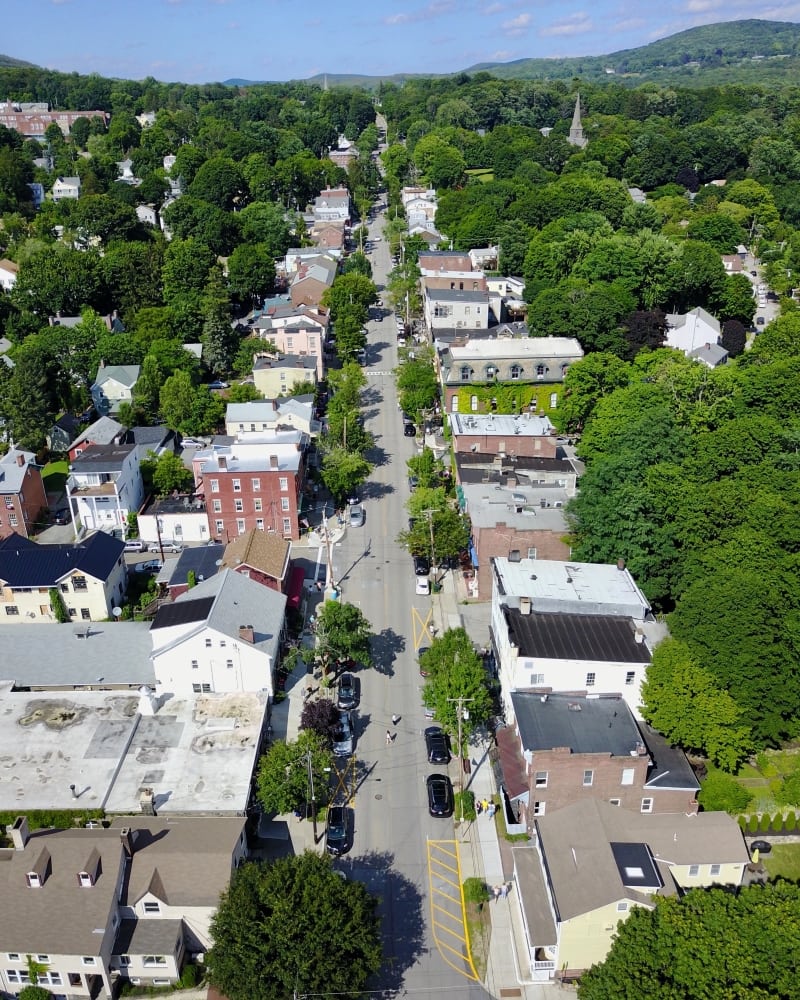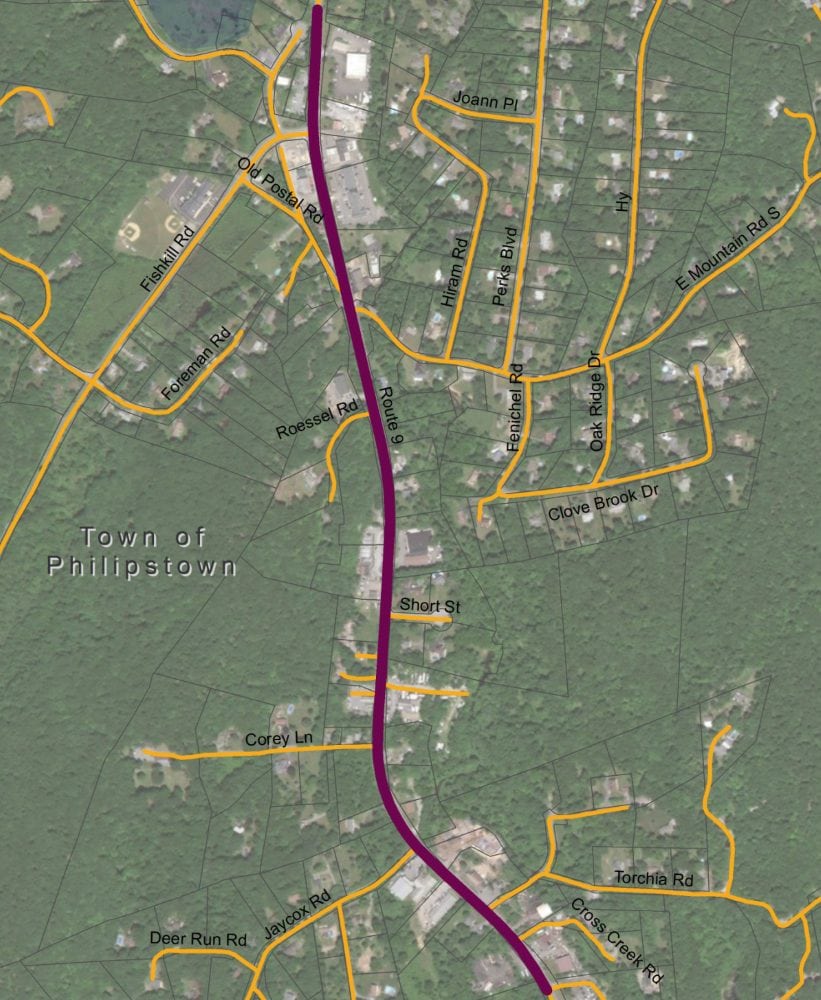County studies how to boost commercial corridors
By Michael Turton
A study designed to revitalize 10 commercial corridors in Putnam County includes recommendations for Main Street in Cold Spring and Nelsonville as well as for Route 9 from Route 301 to Fishkill Road.
The study, which also considered corridors in Carmel, Putnam Valley, Mahopac, Kent, Patterson and Southeast, was commissioned by the county from AKRF, a planning firm based in Manhattan, and Hudson Valley Pattern for Progress.

As part of the Main Street study, the chambers of commerce for Cold Spring and Putnam County hosted a forum in August to gather feedback from business owners.
The participants were generally divided on how Main Street could be improved. Some suggested the village focus on tourism by increasing marketing aimed at New York City residents while adding more overnight accommodations and other amenities. Others expressed concern that increased tourism might threaten the “small-town charm” that is one of the villages’ biggest assets.
“The study’s recommendations seem to largely reflect the suggestions and spirit of the forum,” said Kate Lieberman, president of the Cold Spring Area Chamber of Commerce. She said she expected the report would be discussed at an upcoming Chamber breakfast.
In addition to the forum, AKRF and Pattern for Progress met with local elected officials and conducted surveys of pedestrians on weekdays and weekends.
When those surveyed were asked what was needed on Main Street, the most common answer was more clothing stores, according to the report. Other frequent responses indicated that people wanted “more of the same” such as additional cafes and coffee shops, fine dining, antique stores and bars or breweries.
Main Street
The study contains a number of traffic-related suggestions for Main Street, including:
- Signage at key intersections to direct visitors to the shopping district
- Signage pointing to cultural and recreational destinations such as West Point Foundry Preserve, Boscobel, dining and the riverfront
- Main Street parking meters to ensure better vehicle turnover

Recommendations aimed at community and economic development included:
- Increased availability of public restrooms and an information booth near the pedestrian tunnel
- Marketing materials that feature hours of operation for businesses, including on social media
- Encouraging clothing retailers to open on Main Street
Route 9
While the report provides few new ideas for Cold Spring, the recommendations for Route 9 would put a new face on an area that the report concludes lacks a “sense of place.”
The report suggests signage that gives drivers the sense they are leaving a “nondescript highway” and entering a pedestrian-friendly “place.” The development of small retail stores, including boutiques, gift shops or cafes, is also recommended, to create a more “downtown” hamlet feel. The study also concluded that there is unmet demand for more restaurants in the area.
Many of the recommendations concentrate on making Route 9 from the baseball field on Fishkill Road to Philipstown Plaza more pedestrian friendly, including a network of sidewalks, pedestrian ramps that are compliant with the Americans with Disabilities Act, high-visibility crosswalks and pedestrian lights with countdown timers.

Longer-term initiatives include re-aligning the intersection of Route 9 and Fishkill Road and the creation of parking off Fox Road/Old Postal Road to serve any new development.
The 260-page report, which was funded by Empire State Development and the New York Metropolitan Transportation Council, can be downloaded at bit.ly/putnam-report.

Unless it’s a godless, life-ruining vape shop.
Why do we have to grow? Has anyone asked the residents what they want? Do we need more visitors clogging up and destroying the area? What do residents get out of all this development? Have our taxes been reduced by bringing all this business?
Our parks and town are overrun by a large percentage of people who could not care less about anything but themselves. The developing of more infrastructure to bring more people will only lead to a larger burden on the local government to sustain it. How about we fix what we have first before embarking upon grand schemes to grow? Just take a ride to Long Island or Jersey to see what all this smart ideas have accomplished. People, is this what we want? Make your voice heard!
After reading this article I felt compelled to download the study and read it in detail, primarily on the Cold Spring / Nelsonville / Philipstown recommendations. I’m simply appalled at this work.
The AKRF firm has been the principal planning consultant to the town for quite some time. Cold Spring has hired AKRF on certain environmental/planning application issues in recent years. They ought to have greater familiarity with the facts on the ground in these municipalities. Obviously, they don’t. As to Patterns for Progress, I don’t think they’ve taken a look at Cold Spring in many, many years. In my view Patterns appears to have focused on Orange County extensively (except for very broad regional topics), but other places not so much.
Reading through this work, it appears greatly dependent on internet literature sources, but minimally on doing the more granular visual inspection that good planners do. What they did is often referred to as a “windshield survey” and that’s not a complimentary term. The on-site interviews and meetings were all held in June, July and August of last year and were therefore more likely to address a tourism market than a year-round visitor-plus-resident market on which local merchants must address.
Some examples of the study’s deficiencies: the Nelsonville part of the corridor ends at Peekskill Road, but totally ignores the south side of Route 301 near Fishkill Road, which is a much more logical development node and, currently a “soft” or underdeveloped site.
Similarly, Route 9D north and south of 301 in Cold Spring (which has much huger traffic volume than 301 will ever have) is ignored as a “corridor” but deserves examination in terms of zoning and parking. (Yes, I’m aware of the recent proposal to house a not-for-profit on Morris Avenue that was rejected. That’s why a community conversation is needed.)
Also, what are the pedestrian volumes currently walking along or crossing Fishkill Road and Route 9 intersection that would require sidewalks, crosswalks and timed traffic lights? I would say nearly non-existent. Maybe they didn’t speak to the state Department of Transportation.
Given the in-depth literature search that seemed to have been done, does one think that the consultants could have looked at the Comprehensive Plans for Cold Spring and Philipstown? Both the village and the town engaged in extensive exploration of many of the issues merely mentioned by this study and have a rich body of profoundly substantive reports on the matters. But the consultants must have thought them irrelevant. How insulting to the literally dozens of really committed residents who participated in the Comp Plans process. Also, were the consultants aware of Cold Spring’s Code Update Committee that is currently ongoing? Doesn’t look like it.
Bachan has worked in planning and development for 30 years.
The study was funded with two grants: $50,000 from Empire State Development and $150,000 from the New York Metropolitan Transportation Council.